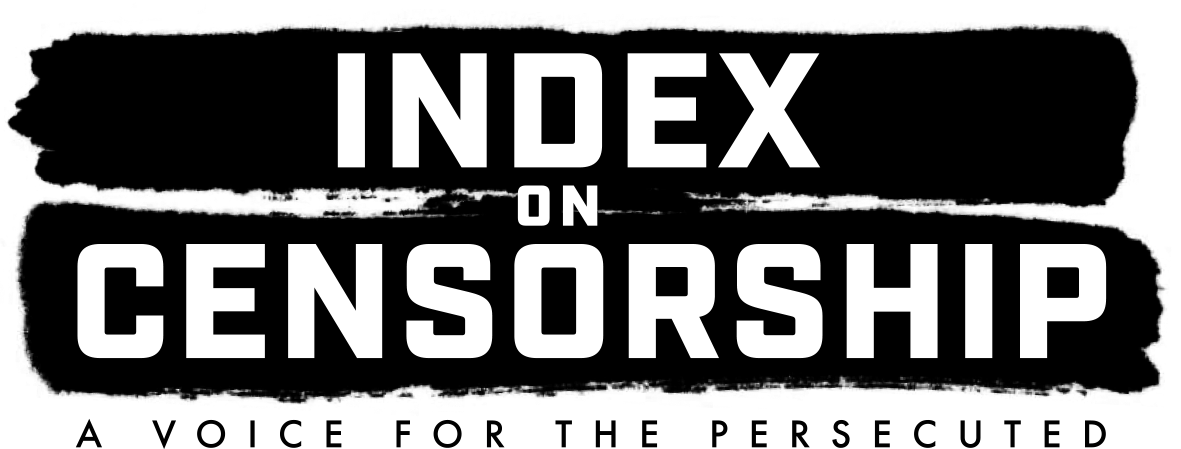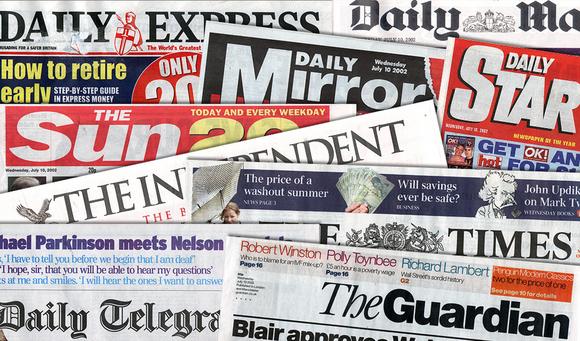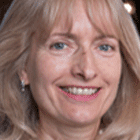01 Oct 14 | Magazine, Volume 43.03 Autumn 2014
[vc_row][vc_column][vc_custom_heading text=”The explosion of social media, the rise of citizen reporters, the dangers of freelancing in a war zone, the invention of new technology: journalism is clearly going through its biggest changes in history. But will the public know more or less as a result?”][vc_row_inner][vc_column_inner width=”1/2″][vc_column_text]
This is the question we explore in great depth in the latest issue of Index on Censorship magazine. Contributors include Iona Craig (2014 winner of the Martha Gellhorn Prize for her reporting in Yemen); Index award nominee Dina Meza and the BBC’s Samira Ahmed. We also have an exclusive, new short story by acclaimed novelist, playwright and author Ariel Dorfman.
[/vc_column_text][/vc_column_inner][vc_column_inner width=”1/2″][vc_single_image image=”59980″ img_size=”full”][/vc_column_inner][/vc_row_inner][vc_column_text]
And Australia’s race commissioner, Tim Soutphommasane, speaks out on how the right to be a bigot should not override the right to be free from the effects of bigotry.
[/vc_column_text][/vc_column][/vc_row][vc_row][vc_column][vc_custom_heading text=”SPECIAL REPORT: THE FUTURE OF JOURNALISM” css=”.vc_custom_1483551011369{margin-right: 0px !important;margin-left: 0px !important;border-bottom-width: 1px !important;padding-top: 15px !important;padding-bottom: 15px !important;border-bottom-color: #455560 !important;border-bottom-style: solid !important;}”][vc_column_text]
Back to the future: Iona Craig on journalists trying to stay safe in war zones
Digital detectives: Ray Joseph on the new technology helping Africa’s journalists investigate
Re-writing the future: Five young journalists talk on their hopes and fears for the profession – from Yemen, India, South Africa, Germany and the Czech Republic
Attack on ambition: Dina Meza on a Honduran generation ground down by fear
Stripsearch cartoon: Martin Rowson envisages an investigative reporter meeting Deep Throat
Generation why: Ian Hargreaves asks on how the powerful may or may not be held to account in the future
Making waves: Helen Womack reports from Russia on the radio station standing up for free media
Switched on and off: US journalist Debora Halpern Wenger on TV’s power shift from news producers to news consumers
TV news will reinvent itself (again): Taylor Walker interviews a veteran TV reporter on the changes ahead
Right to reply: Samira Ahmed on how the BBC tackles viewers’ criticism
Readers as editors: Stephen Pritchard on how news ombundsmen create transparency
Lobby matters: Political reporter Ian Dunt on the push/pull of journalists and politicians inside Britain’s corridors of power
Funding news freedom: Glenda Nevill looks at innovative ways to pay for reporting
Print running: Will Gore on how newspapers innovate for new audiences
Paper chase: Luis Carlos Díaz on overcoming Venezuela’s newsprint shortage
[/vc_column_text][/vc_column][/vc_row][vc_row][vc_column][vc_custom_heading text=”IN FOCUS” css=”.vc_custom_1481731813613{margin-right: 0px !important;margin-left: 0px !important;border-bottom-width: 1px !important;padding-top: 15px !important;padding-bottom: 15px !important;border-bottom-color: #455560 !important;border-bottom-style: solid !important;}”][vc_column_text]
Free thinking? Australia’s race commissioner Tim Soutphommasane on bigotry
Guarding the guards: Jemimiah Steinfeld on China’s human rights lawyers becoming targets
Taking down the critics: Irene Caselli investigates allegations that Ecuador’s government is silencing social media users
Maid equal in Brazil: Claire Rigby on the Twitter feed giving voice to abuse of domestic workers in Brazil
Home truths in the Gulf: Georgia Lewis on how UAE maids fear speaking out on maltreatment
Text messaging: Indian school books are getting “Hinduised”, reports Siddarth Narrain from India
We have to fight for what we want: our editor, Rachael Jolley, interviews the OSCE’s Dunja Mijatovic on 20 years championing free speech
Decoding defamation: Lesley Phippen’s need-to-know guide for journalists
A hard act to follow: Tamsin Allen gives a lawyer’s take on Britain’s libel reforms
Walls divide: Jemimah Steinfeld speaks to Chinese author Xiaolu Guo about a life of censorship
Taking a pop: Steven Borowiec profiles controversial South Korean artist Lee Ha
Mapping media threats: Melody Patry and Milana Knezevic look at rising attacks on journalists in the Balkans
Holed up in Harare: Index’s contributing editor Natasha Joseph reports from southern Africa on the dangers of reporting in Zimbabwe
Burma’s “new” media face threats and attack: Burma-born author Wendy Law-Yone looks at news in the run up to the impending elections
Head to head: Sascha Feuchert and Charlotte Knobloch debate whether Mein Kampf should be published
[/vc_column_text][/vc_column][/vc_row][vc_row][vc_column][vc_custom_heading text=”CULTURE” css=”.vc_custom_1481731777861{margin-right: 0px !important;margin-left: 0px !important;border-bottom-width: 1px !important;padding-top: 15px !important;padding-bottom: 15px !important;border-bottom-color: #455560 !important;border-bottom-style: solid !important;}”][vc_column_text]
Political framing: Kaya Genç interviews radical Turkish artist, Kutlug Ataman
Action drama: Julia Farrington on Belarus Free Theatre and the upcoming Belarus election
Casting away: Ariel Dorfman, a new short story by the acclaimed human rights writer
[/vc_column_text][/vc_column][/vc_row][vc_row][vc_column][vc_custom_heading text=”COLUMNS” css=”.vc_custom_1481732124093{margin-right: 0px !important;margin-left: 0px !important;border-bottom-width: 1px !important;padding-top: 15px !important;padding-bottom: 15px !important;border-bottom-color: #455560 !important;border-bottom-style: solid !important;}”][vc_column_text]
Index around the world: Alice Kirkland gives a news update on Index’s global projects
[/vc_column_text][/vc_column][/vc_row][vc_row][vc_column][vc_custom_heading text=”END NOTE” css=”.vc_custom_1481880278935{margin-right: 0px !important;margin-left: 0px !important;border-bottom-width: 1px !important;padding-top: 15px !important;padding-bottom: 15px !important;border-bottom-color: #455560 !important;border-bottom-style: solid !important;}”][vc_column_text]
From the factory floor: Vicky Baker on listening to the world’s garment workers via new technology
[/vc_column_text][/vc_column][/vc_row][vc_row][vc_column][vc_custom_heading text=”SUBSCRIBE” css=”.vc_custom_1481736449684{margin-right: 0px !important;margin-left: 0px !important;border-bottom-width: 1px !important;padding-bottom: 15px !important;border-bottom-color: #455560 !important;border-bottom-style: solid !important;}”][vc_column_text]Index on Censorship magazine was started in 1972 and remains the only global magazine dedicated to free expression. Past contributors include Samuel Beckett, Gabriel García Marquéz, Nadine Gordimer, Arthur Miller, Salman Rushdie, Margaret Atwood, and many more.[/vc_column_text][vc_row_inner][vc_column_inner width=”1/2″][vc_single_image image=”76572″ img_size=”full”][/vc_column_inner][vc_column_inner width=”1/2″][vc_column_text]In print or online. Order a print edition here or take out a digital subscription via Exact Editions.
Copies are also available at the BFI, the Serpentine Gallery, MagCulture, (London), News from Nowhere (Liverpool), Home (Manchester), Calton Books (Glasgow) and on Amazon. Each magazine sale helps Index on Censorship continue its fight for free expression worldwide.
 SUBSCRIBE NOW[/vc_column_text][/vc_column_inner][/vc_row_inner][/vc_column][/vc_row]
SUBSCRIBE NOW[/vc_column_text][/vc_column_inner][/vc_row_inner][/vc_column][/vc_row]
17 Dec 12 | Uncategorized
You’ll find more women cooking and cleaning in the TV ad breaks than sitting on the couch during Sunday morning public affairs talk shows. And it doesn’t matter where in the world you live.
“Women represent only a third (33.3 per cent) of the full-time journalism workforce in the 522 companies surveyed,” says the most up-to-date Global Report on the Status of Women in the News Media, published by International Women’s Media Foundation (IWMF).
And numbers are even lower when you look at who is leading these news organisations.
The researchers of the IWMF report found that on average globally, “73 per cent of the top management jobs are occupied by men compared to 27 per cent occupied by women”.
The 2011 report is based on questionnaire surveys conducted by local researchers in 59 nations. IWMF does not currently have plans to publish another research report until 2014 or 2015, the organisation told Index.
“There is abundant evidence of underrepresentation of women as subjects of coverage, but until now there were no reliable, comprehensive data on which to make a clear determination about where women currently fit into the news-making operation or in the decision-making or ownership structure of their companies,” says Liza Gross, former Executive Director of IWMF, in the introduction of the report.
A RTDNA / Hofstra Survey of 2010 in the US confirms that there is “no good news for women in radio and television news. Women in TV news and women TV news directors stayed largely the same — each had a slight dip — and women in radio news and women radio news directors both fell noticeably.”
Women in the US are not alone. “Glass ceilings were especially noticeable in Canada, Dominican Republic, Jamaica, Puerto Rico and the United States, although these are manifested at different occupational levels,” says the IWMF report.
Furthermore, a recent analysis by El Pais indicates that the number of women in journalism has fallen in Spain lately. Spanish newsrooms at present include 41 per cent of women. The reason behind this disparity is not lack of raw material. According to data from the Federation of Journalists Associations of Spain mentioned in the report, more than 60 per cent of students in Communication faculties across Spain are women. But women make only 20 per cent of the management positions at media organisations.
So the news is… there is no news. Basically, nothing much has changed since this author had a look at who was commander in chief at media organisations in 2008 in an article entitled “Women-Media: Conspicuous by Their Absence”, published by Inter Press Service news agency.
“Anecdotal accounts seem to imply that the situation is largely unchanged (today). It will likely remain so until a concerted effort is made to address inequities at all levels,” says Elisa Munoz, current acting Executive Director at IWMF in an email interview with Index.
So, what impact does all this have on content and how news is commissioned, gathered and published?
“T” for testosterone
There are studies that point to a “patriarchal mentality” that makes male editors assign “serious” issues — business, sports, and politics — to male reporters, while female writers tend to deal with “softer issues” in the social, culture and entertainment pages. However, the direct connection between more men at the top and less women as sources or dealing with serious, relevant journalistic content needs to be further explored. IWMF acting Executive Director, for example, says: “I am not certain that having a man or woman at the top influences media coverage, as a study on that matter has not been undertaken (by IWMF).”
What many studies do establish is the fact that many more men are sources of stories than women; many more women are represented as victims, and not the protagonists of news; in some countries, like in the US, it has been verified that more men byline front-page stories than women.
Women are always in a worse position both as news makers, sources of relevant information and subjects of stories.
According to The Gender Report of eight online US-based news sites, only 26 per cent of the “human sources” of information were women. Other studies put that figure as low as 22 per cent globally.
“Men have long been the predominant sources for the news media on issues such as the economy, politics and the military. And a new analysis of campaign coverage (by 4th State) found that women aren’t even the principal news source on a topic they would presumably know best: women’s issues,” says a Washington Post article by Paul Farhi.
“When it comes to stories about victims, we represent a whopping 79 per cent (according to a report published recently by Womeninjournalism.co.uk). Pretty good market penetration there. And what about in pictures? Research shows that young women dominate here too — so long as the picture doesn’t actually relate to the story and is just used to give it what’s called a ‘lift’ in the industry. But what about when we turn to the question of ‘experts’? Suddenly we don’t look that impressive, as the media tells us that three-quarters of the keepers of knowledge are men,” says Caroline Criado-Perez in an article published by The Guardian.
The study Criado-Perez is referring to shows that while 79 per cent of “victims” were women there is a dearth of women experts. She says:
This led to the laughable situation poor John Humphrys found himself in… when chairing an item on the Today programme about breast cancer treatment. He was forced to ask his guest whether ‘if you were a woman you would have no hesitation about being screened’; there was no woman expert to answer this question. Apparently. This followed on from the previous day’s segment on teenage contraception, which was again discussed by three middle-aged men,
Female-to-male guest proportions on prime-time cable news in the US are also risible.
“Overall, two-thirds of the guests were men. While the differences between networks were not great, MSNBC was the most male-dominated — only 30 per cent of the guests on that network were women”, says a report on diversity on television entitled “Gender And Ethnic Diversity in Prime-Time Cable News” and published in 2008 by Media Matters for America.
An investigation by Elvira Altes and Silvia Majo, details which were published by El Pais, reveals that women are quoted only in two out of ten stories about the economy, in spite of the fact that 60 per cent of the students graduating from business schools are women. “Their knowledge is wasted, “ said Altes, quoted by El Pais.
“The excuse that there fewer women economists, biologists, politicians or managers is not valid,” says Jose Javier Sanchez Aranda, Communication professor at the University of Navarre, quoted by the El Pais report. His research demonstrates that the presence of women in media is even lower than the presence of women in active society.
Basically, media organisations do not do their job properly. If they did, Sanchez Aranda argues, they would use more female sources. “
And the situation has worsened for women in the media during the economic crisis. The media sector in western countries had been badly hit, causing newsrooms to downsize and the disappearance of foreign bureaux, even whole media organisations. And “it is my understanding that women and minorities have taken a bigger hit,” says Munoz of IWMF, who points out, however, that her organisation has not produced any concrete data.
In any case, it seems clear the small minority of women who have decision making power at media organisations have an impact on how the media portrays women. At least that would explain why you’ll find many more women concocting meals on your screen than cooking the news.
Miren Guitierrez is editorial director of Index on Censorship
![]() SUBSCRIBE NOW[/vc_column_text][/vc_column_inner][/vc_row_inner][/vc_column][/vc_row]
SUBSCRIBE NOW[/vc_column_text][/vc_column_inner][/vc_row_inner][/vc_column][/vc_row]

 Leveson’s “statutory underpinning” is no way to protect press freedom, says Kirsty Hughes
Leveson’s “statutory underpinning” is no way to protect press freedom, says Kirsty Hughes